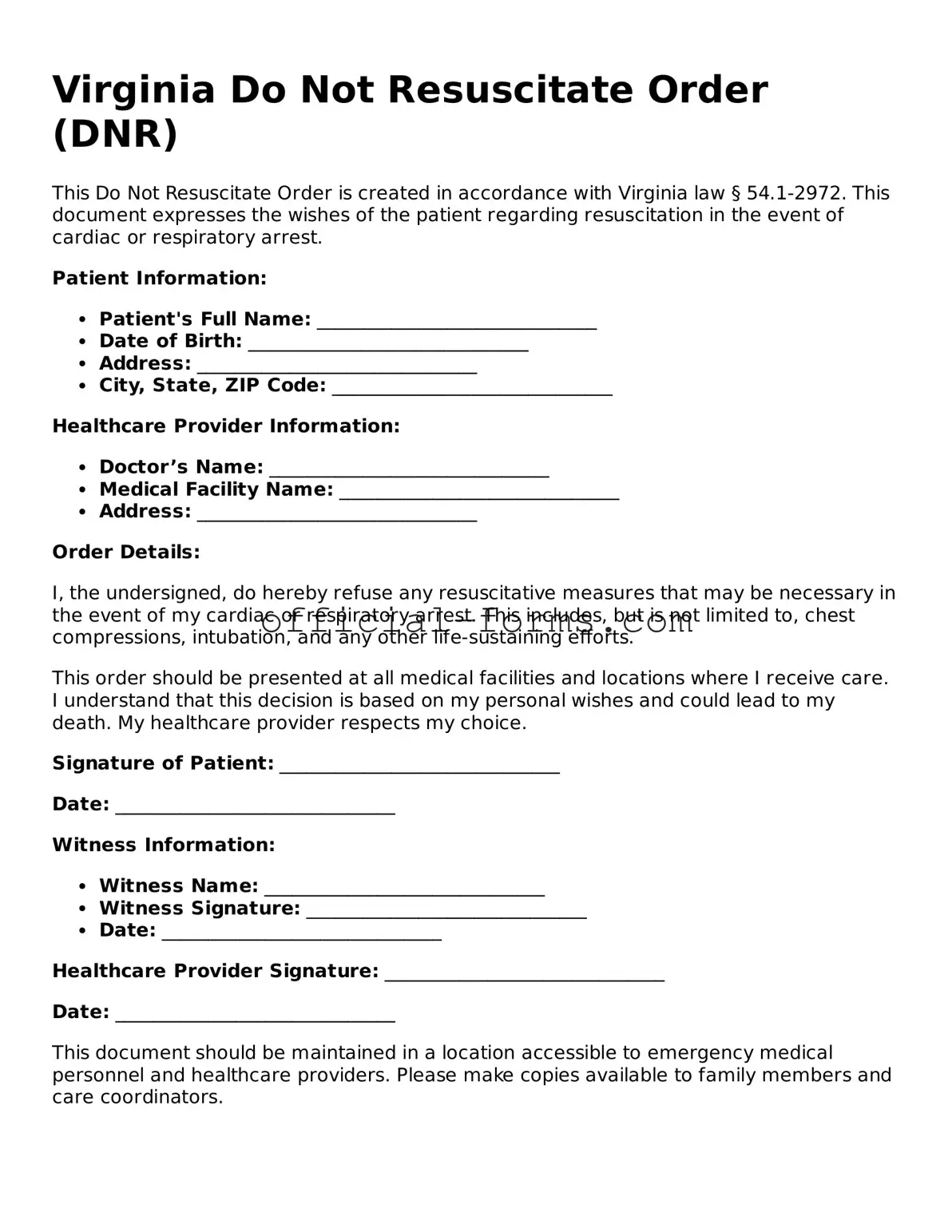Filling out a Do Not Resuscitate (DNR) Order form in Virginia is a crucial step for individuals who wish to express their preferences regarding medical treatment in emergency situations. However, many people make common mistakes that can lead to confusion or misinterpretation of their wishes. Understanding these pitfalls can help ensure that the document accurately reflects a person's intentions.
One frequent mistake is failing to discuss the DNR order with family members or healthcare providers. A DNR order is not just a legal document; it is a significant decision that affects loved ones and medical professionals. Without open communication, family members may be unaware of the individual’s wishes, leading to potential conflict or distress during critical moments. Engaging in conversations about end-of-life preferences can foster understanding and support.
Another common error is not completing the form in its entirety. Each section of the DNR order is designed to capture specific information that is vital for its validity. Omitting details, such as the patient’s name or the signature of a physician, can render the document ineffective. It is essential to double-check that every required field is filled out and that all necessary signatures are obtained to ensure the order is legally binding.
People also sometimes overlook the importance of updating their DNR order as circumstances change. Life events such as a change in health status, a new diagnosis, or a shift in personal values can all impact one’s preferences regarding resuscitation. Regularly reviewing and, if necessary, revising the DNR order ensures that it remains aligned with the individual's current wishes.
Lastly, misunderstanding the implications of a DNR order can lead to significant mistakes. Some individuals may mistakenly believe that a DNR order means they will receive no medical care at all. In reality, a DNR order specifically pertains to resuscitation efforts, such as CPR or advanced cardiac life support, but does not affect other medical treatments. Clarifying this distinction is vital for ensuring that individuals receive appropriate care while respecting their wishes.
